The Rare Books and Manuscripts Division is often asked, “What is the earliest item in your collection?” Believe it or not, the earliest items are cuneiform (kyoo-nee’-uh-form) tablets ranging from 2350-2000BC. The tablets were purchased from Edgar J. Banks, antiquarian and archaeologist, on April 25, 1927 for a total of $24.00.
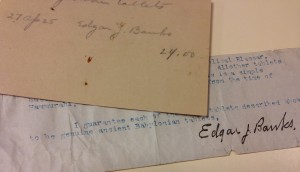
Did you know cuneiform script is one of the earliest known systems of writing? Developed in Mesopotamia around 3500-3000BC, a stylus or scribe pressed into soft clay to produce wedge impressions, called pictographs or phonograms. The library’s cuneiform tablets include simplified, wedge-based strokes with word concepts, rather than signs. They were found in southern Mesopotamia (modern day southern Iraq) and created by the ancient civilization of Sumer.
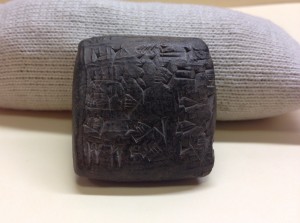
Above: Found at Umma (Jokha), this is a typical temple record of offerings from around 2350BC. After the tablet was written (while the clay was still soft), the temple scribe rolled over his cylindrical stone seal, making it impossible to change the record. The seal impression confirms the scribe’s signature and other important figures.
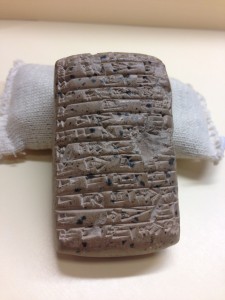
Above: Found at Umma (Jokha), this is a large tablet containing a long list of produce, probably a tax list. The date is approximately 2350BC. The tablet comes from the early part of the Ur Dynasty of Kings who ruled Babylonia from about 2400-2100BC.
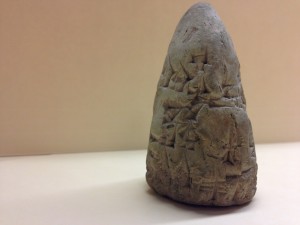
Above: Found at Uruk (Warka), this is a votive cone, made by the priests of the Temple of Ishtar, the Goddess of Love. The inscription reads, “For Sin-ga-shid, the mighty hero, King of Erech, King of Amanu, in the temple of the Goddess Ishtar which he built in the royal residence of his kingdom.” The date of this king, and therefore of the cone, is about 2100BC.
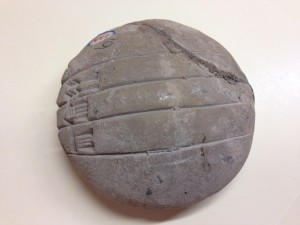
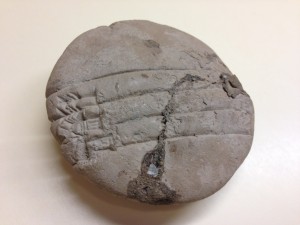
Above: Found at Uruk (Warka), this is a very rare school exercise tablet. These tablets are always this shape, round, nearly flat on one side and convex on the other. The teacher wrote the exercise on the convex side (left) and the boy copied it on the other side (right). The inscription has no meaning, being words for the practice of writing, dating from around 2000BC.
This blog post was written by Bethany Fiechter, Rare Books and Manuscripts Supervisor, Indiana State Library. For more information, contact the Rare Books and Manuscripts Division at (317) 232-3671 or “Ask-A-Librarian” at http://www.in.gov/library/ask.htm.
